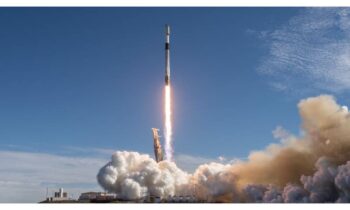For the first time, two black holes have been seen to collide in the distant cosmos. The James Webb Space Telescope’s measurements show that the cosmos was only 740 million years old—roughly a twentieth of its present age—when two galaxies merged and the massive black holes at their centers were revealed.
The finding that huge mergers seem to have been widespread in the early universe may provide some insight into how supermassive black holes, such as the one at the center of the Milky Way, grew to such enormous sizes.
One of the observations’ team members, University of Cambridge physicist Prof. Roberto Maiolino, stated: “One problem that we have in cosmology is explaining how these black holes manage to grow so big. In the past we have always talked about gobbling matter very quickly or being born big. Another possibility is that they grow very fast by merging.”
Up until recently, it was unclear if the black holes at the centers of galaxies would also change into a single cosmic sinkhole as a result of their known mergers. According to recent models, one of them would be expelled into space and turn into a “wandering black hole.”
The most recent observations have given us our first look into galaxy mergers from a far-off past by utilizing the reach of the Webb telescope into the furthest regions of the universe.
Astronomers can identify black holes thanks to their unique spectrum signatures, which are produced when massive amounts of matter and energy are absorbed by the merging black holes. This activity showed that a collision between two black holes, one of which is thought to have 50 million times the mass of the sun, was occurring in the ZS7 system.
“The mass of the other black hole is likely similar, although it is much harder to measure because this second black hole is buried in dense gas,” Maiolino stated.
It was discovered through later investigations that about one-third of the black holes found during this time seemed to be merging. The quick growth of early black holes may have been facilitated by this, he speculated.
“One of the major blanks in our cosmic history book is where giant black holes, millions or billions of times the mass of sun, came from. Do they somehow get born big, or do they have to be built from initially smaller black holes that smash together to form the giants? This new evidence from [the Webb telescope] is indirect, but it helps suggest a major role for black hole collisions.” stated Prof. Andrew Pontzen, a cosmologist from University College London who was not involved in the research.



